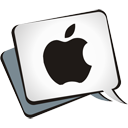So far in our review of the Synology DS216 NAS we have looked at an overview of the hardware, software and set-up in Part 1, and a look at the administration and basic file sharing function in Part 2. If all you wanted to do was use the device to share files in a home or office environment, we could probably stop there. But there is so much more the Synology DS216 can do. In our third and final part of this review, we are going to touch on just a few of the many additional functions that are available.
Cloud Station
Cloud Station is your own personal cloud storage service. Think of it as your personal Dropbox, Google Drive or OneDrive, but without the small storage amounts that come with free accounts or the monthly fees for larger storage.
The Cloud Station application has three pieces of software to make it work, a server package, a client package and a mobile application. The server package is downloaded directly from the Package Center and self-installs onto the DS216. Once that is complete, it presents you with a screen to install the Mac OS X client onto your computer. That installation creates a special folder similar to Dropbox which appears in your Finder sidebar and as a new icon on the right side of the menu bar. Once created, any file or subfolder that you put into the Cloud Station folder on the Mac is automatically synchronized on the DS216 in the same folder. If you should add something to the folder on the DS216 via File Station it will automatically be synchronized back down to the Mac.
Cloud Station also allows you to work on your files while you are off-line from the DS216. When your Mac is reconnected to the DS216, any new files and/or changes will be copied back to the server.
There is also a free app called DS Cloud which is available in the App Store. DS Cloud gives you the ability to read any files in you Cloud Station folder but you cannot edit them directly from the DS Cloud app. You would need to open the file in its native app (Pages, Numbers, etc.), make the needed changes, save the file and then move it back into DS Cloud to be synchronized back to the DS216. While we admit this is not the most efficient workflow, we also think that it is more an issue of how iOS works.
Synology DS216 NAS File Sharing
Like DropBox, the Synology DS216 NAS provides for sharing files of any size to anyone, not just to users registered to the device. While the sharing function works well, we did stumble the first time we tried it.
The process to share a file is simple. Right click on the files and/or folders you wish to share and select “Share File Links”. As the name implies, a new window opens and provides links for the files or folders previously selected. You can then decide if you want to secure the links with a password and set an expiration for the links. You then copy the links into an email and send it to the parties you want to share the file with.
What we found is that if you create the links as a local user, the link contains your internal network IP address. When the remote user tried to use the link, they are denied access because the URL can’t be resolved to the internal IP address of the DS216. We worked around this problem by logging in to the DS216 through our Quick Connect ID rather than as a local network user. This time, the links created by the system contained the external IP address that is resolved by the Synology servers back to our local IP address, and the links worked flawlessly.
We searched the Synology Forums and help files to see if perhaps, we were doing something wrong. We actually found a forum post about this exact issue and it appears that we are on the right track on how to share files with external users.
A better solution might be to add some functionality that guides the user to specify if the file recipient is an external user and then have the system craft the link using the external IP address automatically. If there isn’t a better solution for this, it might be helpful for Synology to expand their on line videos and/or Help files to help clarify the process.
Overall, this is a minor issue because the actual file sharing process is smooth and very easy, once you know how it works.
iTunes Server
One of the reasons people look to use a NAS is to be able to off-load some of the files that they may not need on their internal hard drives all the time. This is especially true for laptops and music libraries.
Five years ago, it was thought that the average digital music library was about 7,160 songs. That’s almost 32GB of music. Today, by some estimates, a music library can be two to three times that size. It is also not unusual for members of a family to have a lot of the same music on their individual computers. Add it all up and that’s a lot of storage space.
The iTunes Server application automatically looks at the music files you put into the shared Music folder on the DS216 and makes it available as an additional library on your own iTunes through the use of Home Sharing. We set it up and, like Apple products themselves, it just worked. We see this as a way to free up a lot of space on our internal drives and eliminate some of the file duplication that currently exists within many households. It should be noted that you have to be on your local network to access the music files through iTunes Server. In those situations where you are remote to you network, Synology has you covered.
Audio Station
 A compliment to the iTunes Server is Audio Station and the associated DS Audio app. Audio Station uses the same shared music folder as the iTunes Server but gives you the ability to access your music files when you are not on your local network. Using the Quick Connect function we discussed in Part 2 of our review, Audio Station presents your entire music library (stored on the DS216) in the same Album, Artists, Songs, etc. styles that you are used to. You even have the ability to create playlists and download some of the music to your iPhone or iPad is you want to.
A compliment to the iTunes Server is Audio Station and the associated DS Audio app. Audio Station uses the same shared music folder as the iTunes Server but gives you the ability to access your music files when you are not on your local network. Using the Quick Connect function we discussed in Part 2 of our review, Audio Station presents your entire music library (stored on the DS216) in the same Album, Artists, Songs, etc. styles that you are used to. You even have the ability to create playlists and download some of the music to your iPhone or iPad is you want to.
Audio Station and the DS Audio app are a nice way to take your music with you without the need to have it all local on your iOS device. As mobile phone carriers increase the amount of data they are giving customers, the ability to stream music is becoming more popular and Audio Station could become a replacement for services like Pandora.
This also give you an opportunity to keep your master library on the DS216 but still have access to it while traveling and if you happen to be on a Wi-Fi network, can listen to your entire music collection for free.
Video Station
What Audio Station d oes for music, Video Station does for your recorded video collection. Since the DS216 has a built-in DLNA server, we were able to view our video library directly in the My Media section of our network connected LG TV. This is a big improvement from connecting a USB flash drive or iPad to the back of the TV to see a much smaller collection of movies. The video files started almost immediately and we did not experience and drop-outs or pauses in the video stream due to buffering issues.
oes for music, Video Station does for your recorded video collection. Since the DS216 has a built-in DLNA server, we were able to view our video library directly in the My Media section of our network connected LG TV. This is a big improvement from connecting a USB flash drive or iPad to the back of the TV to see a much smaller collection of movies. The video files started almost immediately and we did not experience and drop-outs or pauses in the video stream due to buffering issues.
Like its audio counterpart, Video Station has a companion DS Video app which allows you to take your video collection with you. While you may not want to use your data plan to stream an entire movie over a 4G LTE signal, you certainly could. During our testing we found that after a very short initial period to allow the movie to buffer, the playback was extremely smooth, with no drop outs or pauses. We were even able to jump around the movie using the scrubber bar on an iPhone 5s and the movie picked up at the new spot without hesitation. The DS Video app also allows you to download a video file stored on the DS216 for local playback on your iPhone or iPad.
For people who may have smaller capacity mobile devices, this is a great way to have access to your entire library without having to load up all your video files before you travel. We could easily see a situation where you load one or two movie files on you iPhone or iPad, watch them when you travel, delete them when you get to your destination (which hopefully has access to Wi-Fi), and then download one or two more for your return trip.
Photo Station
 Last, but certainly not least is Photo Station and its companion DS Photo app. As you can probably guess by now, Photo Station gives you the ability to store your photos on the DS216 and access them remotely. Photos are organized into folder (called albums) and users have the ability to create private albums within Photo Station or share their photos with other DS216 users. Like the audio and video apps, this gives you the ability to off-load some of your older memories from your computer’s internal hard drive but still have them available at the touch of a button.
Last, but certainly not least is Photo Station and its companion DS Photo app. As you can probably guess by now, Photo Station gives you the ability to store your photos on the DS216 and access them remotely. Photos are organized into folder (called albums) and users have the ability to create private albums within Photo Station or share their photos with other DS216 users. Like the audio and video apps, this gives you the ability to off-load some of your older memories from your computer’s internal hard drive but still have them available at the touch of a button.
The DS Photo app does pretty much what you would expect and gives you the ability to view photo libraries stored on the DS216 right on your mobile device. Albums can also be downloaded for off-line viewing. But our favorite feature was the ability to upload photos from our iPhone camera roll, into Photo Station, using the DS Photo app and then be able to delete the photos from our camera to reclaim the space, all while completely remote from our computer and the DS216.
The age of digital photography has changed how people take pictures. In the days of film, picture taking was an expensive hobby. Beyond the cost of the camera equipment, there was the cost of the film and the processing. As a result, most people were judicious about trying to get the perfect shot. That’s all changed with digital photography. It now costs nothing to snap dozens of pictures of the same scene and either delete the ones you don’t want, or better yet, keep them all. As a result, almost without exception, no matter how much memory you have in your iPhone, you are going to run low on storage space at some point.
Services like iCloud Photo Sharing and Google Photo are great alternatives for saving your photos to the cloud and sharing them with all of your devices. The problem is, if you delete a photo from your iPhone or iPad, it gets deleted from the cloud services too, which means it is lost forever.
Using the DS Photo app, we were able to upload photos from our iPhone into Photo Station and then delete the photos from the iPhone. The photos remained in Photo Station and were still viewable in the DS Photo app.
What Else?
The features we discussed above are probably the most common and the ones the average user would probably be interested in first, but that doesn’t mean this is an average NAS. There is a wide range of other applications and services that the DS216 and DSM 5.2 support and depending on your wants and needs, here is a brief list of just some of them (in no particular order):
Cloud Sync – allows you to share files between the DS216 and commercial cloud services like Dropbox and Google Drive
Download Station – supports the download of almost any file format you can think of onto the DS216 including Bit Torrent, FTP and HTTP formats.
Web Station – allows you to run a web site right from the DS216 with additional packages to run a DNS Server, a Mail Server with a companion Mail Client and even an On-Line Storefront and VPN Server.
Surveillance Station – supports multiple IP cameras connected to your network. DSM 5.2 includes two camera licenses and additional license packs are available from Synology.
Content Management Systems – the DS216 can run many of the popular CMS platforms including Drupal, Joomla and WordPress. While you may not want to use the DS216 as your production platform (although you could), this makes an excellent environment for a site developer or a test platform before releasing a new version into your production environment.
The Bottom Line
If you haven’t guessed by now, we are in love with the DS216 and DSM 5.2. We have had it running for weeks without any issues or need to restart the unit. It is powerful but extremely quiet and in fact, sometimes found ourselves checking the front panel LEDs to make sure it was actually running.
The DS216 and DSM 5.2 performed better than we expected. The DSM is extremely responsive whether working in a direct connection or remotely. While the feature set is robust and may seem intimidating to some, the learning curve is not very steep and the vast resource available will make almost any user, willing to spend some time with it, comfortable in a short period of time.
As good as DSM 5.2 is, Synology is one of those companies that seems to never stand still. They are already well on their way to the next version (DSM 6.0) which is currently at Beta 2 testing. While we haven’t seen it running yet, the list of enhancements and new features is impressive and a clear indication that Synology products are just going to keep get better.
The minor Quick Connect display issue on one of our User Accounts that we reported to Synology’s tech support staff early in our testing, was never actually resolved as the Synology team was not able to recreate the problem on their iPhone and iPad even after remotely logging into our hardware. We were happy to see that after that brief period of slow response, Synology tech support did follow up with us regularly and provided some suggestions to work around the problem. Admittedly, this was a very minor issue and we don’t want to lose sight of the fact that our other support issue involving system security was resolved in less than 24 hours. All in all, we are impressed with the Synology support across the board.
It almost seems unfair to call the DS216 a NAS device. The variety of applications available from the Synology Package Center makes this so much more. This is a hard working server that offers a list of benefits and features that is hard to duplicate at this price.
Synology units are not inexpensive and the DS216, being a diskless unit is no exception. But we see this as an investment in a hardware and software platform that can grow as your needs do rather than just buying another piece of hardware. In addition, Synology offers some less expensive single and dual drive units that come with hard drives installed which are a little more cost effective but run the same DSM operating system as the DS216 and while we haven’t had an opportunity to try one out, we would expect a very similar user experience.
We would like to thank the good folks at Synology for providing the DS216 for our review.
The Synology DS216 as well as the Seagate NAS drives we tested as well as other compatible hard drives are available from Amazon.
If you liked this article, please consider sharing it with your friends and leaving a comment below.
Also, don’t forget to “Like” us on Facebook and “Follow Us” on Twitter.
If you missed the earlier parts of our review you can read Part 1 here and Part 2 here.



Leave a Comment
You must be logged in to post a comment.